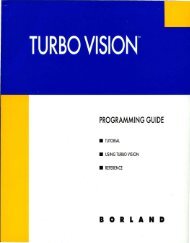The installation instructions included in this page are not meant to be comprehensive and represent only one of the many ways of getting ns-3 to build in a Snow Leopard Mac OS X system (note: also works for OS X Lion). Commands (>>) should be run from a Terminal window. Mac OS X does not support all of the features of ns-3, but core functionality is provided. Check Installation for further details on what is and what is not supported on Mac OS X.

ROM Header Editor Genesis Utility in General Category edit the header information of Genesis.bin ROMs.
- Download nokia software recovery tool 6.3.56. Mobile Phone Tools downloads - Nokia Software Recovery Tool by Nokia and many more programs are available for instant and free download.
- Request.headers'x-forwarded-for' request.connection.remoteAddress. If the x-forwarded-for header is there then use that, otherwise use the.remoteAddress property. The x-forwarded-for header is added to requests that pass through load balancers (or other types of proxy) set up for HTTP or HTTPS (it's also possible to add this header to requests when balancing at a TCP level using proxy.
- Fix one: install the Allow-Control-Allow-Origin plugin. The quickest fix you can make is to install the moesif CORS extension.Once installed, click it in your browser to activate the extension.
1) Install XCode
You will find XCode in the Mac OS X Install DVD that came with your Mac. Alternatively, you can download the most recent version of XCode from the Apple Developer Connection website (http://developer.apple.com/mac/). The XCode development environment includes the gcc compiler and critical libraries required to build applications to be run in Mac OS X.
Note: as of October 2011, XCode seems to be distributed through the App Store, which means you need to have an account there. Please be aware that if you install this app, you will only install a meta-app called 'Install Xcode'; you need to go into Applications/ directory and run this to complete the installation of Xcode.
You will know you have installed it if you can see gcc installed:
2) Install Fink
2.1) Download Fink source release version 0.29.10 from http://downloads.sourceforge.net/fink/fink-0.29.10.tar.gz
2.2) Extract the contents of the file and enter open up the Terminal in the resulting folder.
2.3) Install Fink (during the interactive installation process, select the 32 bit installation).
>> ./bootstrap
2.4) Execute a script in order to setup the environment variables for Fink.
>> /sw/bin/pathsetup.sh (assuming a default install folder).
2.5) Install updated packages, if available.
>> fink selfupdate
2a) Install MacPorts
Note that you can use also MacPorts (http://www.macports.org/) instead of Fink. It's really a matter of your personal choice, but it is better to go with one or the other and not both. If you are using MacPorts, or you want to install it, you can ignore the above about fink and move to step 3.
3) Install Mercurial
- MacPorts: sudo port install mercurial
- Binaries: http://mercurial.selenic.com/wiki/Download. Choose the latest binary package. Either you can choose to install mercurial through MacPorts or Fink, but make sure to have a recent version (1.4.2 or better)
- Also, there is a self extracting binary installer dmg file for OS 10.6.2 (mercurial-1.6.3)

4) Download source code
>> hg clone http://code.nsnam.org/ns-3-allinone
>> cd ns-3-allinone
>> ./download.py
5) Build the local repository
>> ./build.py
6) Test the installation

>> cd ns-3-dev
>> ./test.py
Possible issues
There is a known bug involving -arch directive. If you get an error about linking and object architecture mismatch, check if you have an environment variable 'CFLAGS=-arch i386' or similar. If you do, try disabling it.
Change Internet Explorer Title Bar
(and Outlook Express too)
(These hints require changes to MS Registry system which can be a bit risky, and you should always back it up prior to making any changes. If you have any doubts about the changes youre making in the Registry, dont make them. Mistakes in your Registry can make your computer unbootable.)
How To Edit Rom Headers Using Nsrt 3.4 For Mac Osx
Some sites change your Internet Explorer title bar without your permission. Most people who have had AOL may find their IE title bar reading, Microsoft Internet Explorer Provided by America Online (or some other entity).
To change the IE title bar to contain the title you want, click Start, click Run, type regedit, and then click OK or press ENTER. When the Registry Editor window appears, collapse all the branches of the directory tree in the left pane (click any minus signs [-] that appear there) until only the main My/Computer branch is visible. Then, expand branches (clicking plus signs [+] until you work your way down to HKEY_CURRENT_USER/SOFTWARE/MICROSOFT/INTERNET EXPLORER/MAIN. Look in the right pane; it should contain a number of items. Look for one called Window Title. Double-click this entry, and then delete the offending text in the Value Data field of the Edit String dialog box. Type in any name you want and click OK. Restart Windows, and the name you entered should appear in your IE title bar.
You may also change the title bar in your Outlook Express by running regedit in your start/run then navigating down to the following key: HKEY_CURRENT_USER/IDENTITIES/
How To Edit Rom Headers Using Nsrt 3.4 For Mac Shortcut
09/20/10maw

Comments are closed.